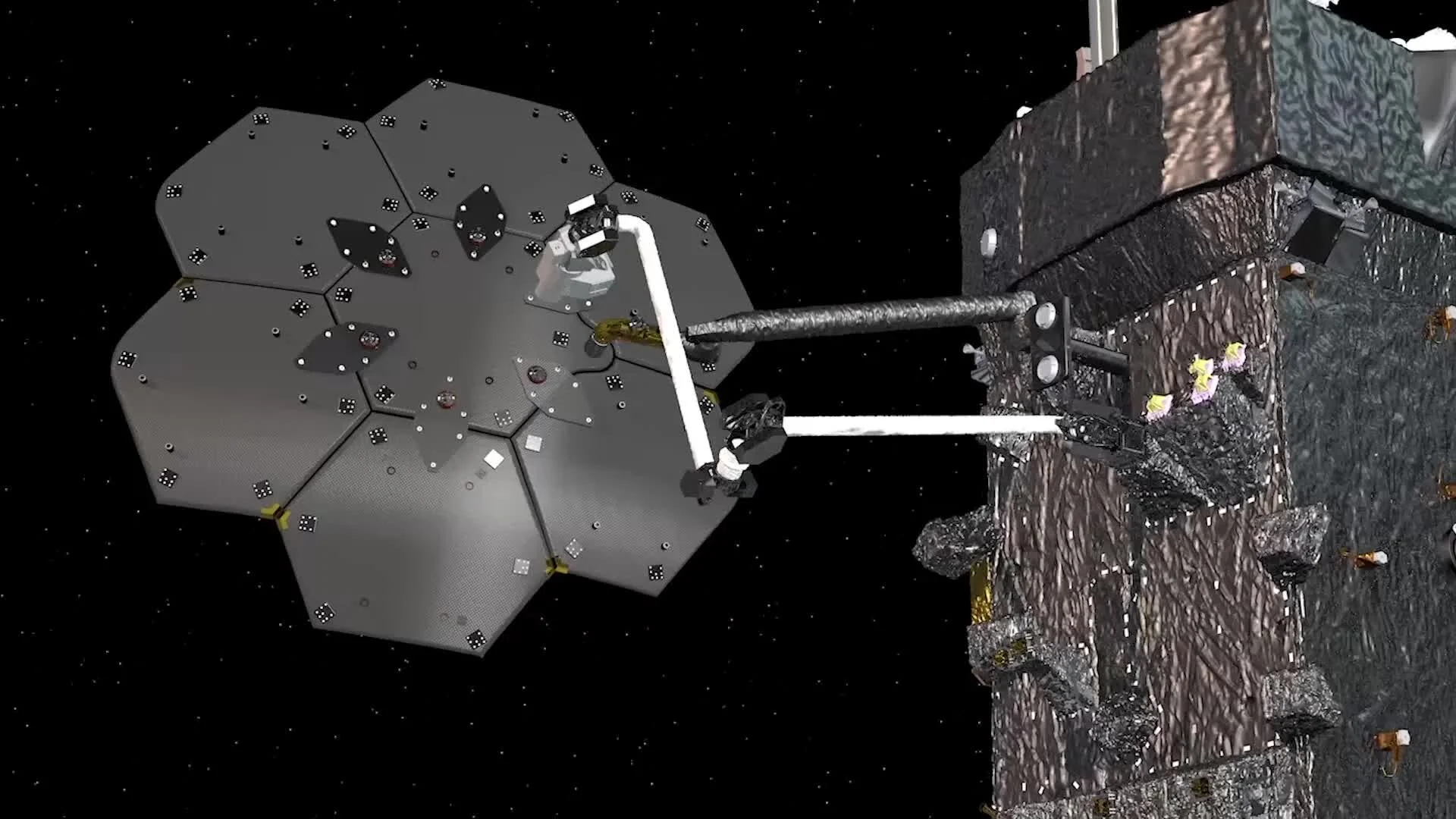In-Space Robotic Assembly by Maxar Technologies
The SPIDER tech demo will assemble a functional 3 meter communications antenna, and a 10 meter composite beam while in space. Credit: Maxar Technologies.
NASA’s upcoming Restore-L mission will seek to service a low-Earth orbit satellite, bringing it closer to its original state. The spacecraft is planned to launch in 2023, where it will demonstrate autonomous rendezvous, refueling, repairing, and manufacturing tasks. NASA has used public-private partnerships to procure technology payloads for this mission in order to promote industry innovation at low cost.
As of January 2020, NASA has awarded Maxar Technologies with a $142 million dollar contract that combines industry and NASA funds to complete the second phase of hardware development for a Restore-L mission payload. The SPIDER (Space Infrastructure Dexterous Robot) payload team includes contributions from Maxar, Tethers Unlimited, West Virginia Technology Center, and NASA Langley Research Center. SPIDER was previously known as Dragonfly when it completed a ground demonstration for a NASA Tipping Point contract.
SPIDER is one of the payloads attached to the Restore-L spacecraft and includes a 5 meter robotic arm. With this arm, SPIDER will assemble a 3 meter wide communications antenna, and a 10 meter composite beam. Once constructed, the spacecraft will test the communications antenna, demonstrating Ka-band transmission to a ground station. Construction of the 10 meter beam will demonstrate on-orbit production of large structures using technologies developed by Tethers Unlimited.
Practical applications of space mining and manufacturing depend on in-space fuel transfer and robotic assembly similar to those that Restore-L will demonstrate. This can be seen through efforts by others, such as large-scale fuel transfer by SpaceX using their Starship transportation system and in-space construction by Made In Space using their Archinaut system. Having multiple techniques and technologies to achieve the same goal is ideal at this stage because there are no tried and tested approaches yet.
Broad commercial manufacturing, satellite repair, and fuel-handling capabilities are being developed and will be demonstrated in-space throughout the 2020s. The Restore-L mission contributes to laying the groundwork for a growing space economy.
Read more about the NASA award here.







